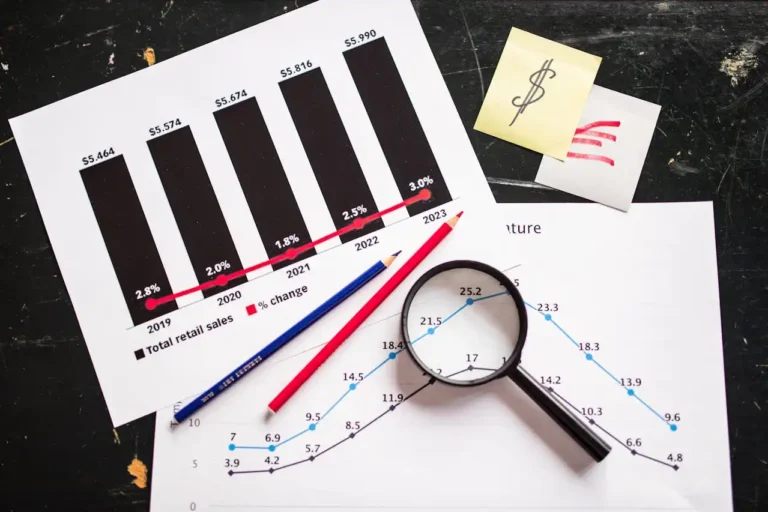Direct investment in single bonds or assets is arguably a very promising medium with respect to wealth accumulation and individual financial management. Nevertheless, there are constrained and potentially risky aspects of the application of this method.
Compared with mutual fund investments or other compareable assets, direct investments take a big leap forward in terms of demanding deep market knowledge, time efficiency, and high risk in one go. Let’s discuss the risks and how to minimize them.
Market Volatility
Single stocks are highly sensitive to movement in the market and price movement can be very unpredictable as a result of:
Economic Conditions: Recessions, inflation, or political crisis will, at a minimum, engender some degree of price instability.
Sector-Specific Trends: In some regions, (e.g., I.T. or energy) the stock market is more turbulent.
Impact: If the stock price plummets suddenly to the bottom, you will lose enormous financial consequences and especially, when the stock market is down and out.
Lack of Diversification
Investing heavily in a single stock or security exposes your portfolio to a risk where a single event in that company can eradicate all your wealth, while you miss all the movement and growth happeneing in different securities of stock market.
Example: Investing heavily in a company and that company suffers from low performance caused by management or loss of demand, your entire portfolio could be very badly hurt.
Impact: On the other side of acquisitions in diversified investment(e.g., mutual funds), the direct investmentis, in fact, without any safety net provided by how risk is distributed among many assets or groups of assets.
Company-Specific Risks
Stocks, however, are still exposed to idiosyncratic risk. e.g.
Corporate Mismanagement: Poor leadership decisions can lead to declining profitability.
Financial Instability: The lack of control of debt, lack of liquidity (gross cash flow -ve) and/or drop in revenues is potentially deadly over the long term.
Scandals or Fraud: Such accounting fictions or professional mismanagement may have extremely adverse consequence for the market value of a company.
Impact: Even markets in general may well be robust, they can, however, put company-specific situations at great risk.
Knowledge and Time Commitment
Direct investment requires a deep understanding of:
Market Trends: Staying updated on industry and macroeconomic changes.

Financial Analysis: Interpreting balance sheets, income statements, and key ratios.
Monitoring Investments: Keeping track of news and events affecting your assets.
Impact: Unfortunately, the lack of information and time makes it most of the retail investor whose decision is suboptimal not to implement the skilled deep technique.
Emotional Investing
Investing directly in stocks can trigger emotional responses like:
- Fear: Panic-selling during a market downturn.
- Greed: Impulse purchase of a stock during the bull market without any prior experience with funds.
- Impatience: Exiting positions prematurely due to short-term volatility.
Impact: Emotion drive buy high and sell low which can make all the gains disappear.
Liquidity Risks
In certain asset classes, i.e., real estate or illiquid equities, there might be a lack of buyers in case you want to quit.
Example: Low volume stock may terminate without variation of price.
Impact: Loss of ability to liquidate assets during crisis may jeopardize your net worth.
Regulatory and Taxation Issues
Direct investments are subject to complex rules and taxes:
Regulatory Changes: Policy makers, e.g., new taxes and sector specific regulations, impact stock behaviour.
Tax Liabilities: Short-term capital gains tax and dividend tax withholding (i.e., having the net income be lower).

Impact: Failure of taking into account these factors can limit the effectiveness of your investment strategy.
Overexposure to Speculative Assets
Investing in risky securities, i.e., penny stocks, may cause one to be at significant risk of a large financial loss.
Example: Chasing fantasy of exponential growth investment can blow all your money in an instant.
Impact: Speculative investments are incomprehensible, and therefore, do not cater to your risk tolerance and investment goal.
Strategies to Mitigate Risks
- Diversify Your Portfolio: Spread investments are suggested to be diversified not only by industries and places, but also not by asset classes to avoid a high risk of large damages.
- Do Your Homework: Analyse the basis of the company’s consisting of financial stability, qualitative management and company context.
- Invest Only What You Can Afford to Lose: Single stock exposure should not be a sizable percentage of the overall portfolio.
- Stay Disciplined: Develop a behavioural investment strategy that does not strongly depend on market frenzy or irrationality.
- Set Stop-Loss Limits: Employ stop-loss orders to limit potential losses up to a limit value in volatile markets.
- Consider Professional Advice: Lose track of time and/or lack of information and/or seek advice from a financial planner or have an asset (i.e., the fund endowment) managed by someone else.
Conclusion
Direct equity and asset investment is conducive to high return and high return uncertainty. It is a task that demands good market knowledge, rigorous analysis, and thorough implementation. Despite its allurement, the temptation to pick the next blockbuster stock is that the task is differentiation between volatility, lack of diversification, and sentiment investing.
In order to be successful, a mix of direct investments is required in combination with more diversified instruments, keep up to date and do not invest more than what is comfortable for your risk level.







